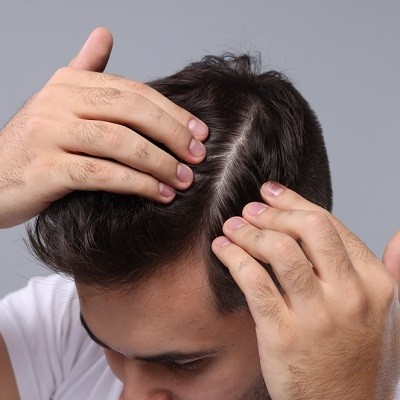Hair transplant in Islamabad are a life-changing procedure for those struggling with hair loss. However, achieving the best results requires more than just undergoing the surgery. If you’re considering or have already had a hair transplant, you may be wondering how you can maximize the outcomes and ensure long-lasting, natural-looking hair growth. This guide offers tips and strategies to improve your hair transplant results before, during, and after the procedure.
Pre-Procedure: Setting the Stage for Success
The foundation of a successful hair transplant lies in the preparation before the surgery. Here are a few key steps to take:
1. Choose a Skilled Surgeon
Your hair transplant’s success largely depends on the skill and experience of your surgeon. It’s essential to choose a board-certified, experienced surgeon who specializes in hair restoration. Look for someone with a proven track record in performing successful hair transplants and positive patient reviews. The surgeon’s expertise ensures that the hair follicles are carefully harvested and transplanted, minimizing the risk of complications and achieving a natural appearance.
2. Healthy Lifestyle Habits
Before the procedure, adopting healthy lifestyle habits can play a significant role in the healing process and the overall success of the transplant. Eat a balanced diet rich in vitamins and minerals, particularly those that promote hair health, such as biotin, zinc, vitamin D, and omega-3 fatty acids. Regular exercise and staying hydrated also contribute to improved circulation, which aids in the healing process and encourages hair growth.
3. Consultation and Realistic Expectations
During the consultation, discuss your hair loss goals and expectations with your surgeon. They should assess the donor area (usually at the back or sides of the head) to ensure it’s suitable for harvesting follicles. Set realistic expectations regarding the final outcome—while a hair transplant can create dramatic results, it’s important to understand that full results may take months to become evident.
4. Avoid Smoking and Alcohol
Smoking and alcohol consumption can interfere with blood circulation and slow down the healing process. It’s advisable to quit smoking at least a few weeks before the procedure and refrain from consuming alcohol as directed by your surgeon.
During the Procedure: Maximizing Efficiency
The actual hair transplant procedure typically involves either follicular unit extraction (FUE) or follicular unit transplantation (FUT). Each method has its benefits, and your surgeon will choose the one best suited to your needs. To ensure the process goes smoothly, it’s important to:
5. Follow Pre-Procedure Instructions
Your surgeon will provide you with a set of pre-procedure instructions, such as avoiding certain medications or hair products. It’s crucial to follow these directions to reduce the risk of complications. Some medications, such as blood thinners or nonsteroidal anti-inflammatory drugs (NSAIDs), can affect the procedure’s success, so follow your doctor’s guidance on which ones to avoid.
6. Local Anesthesia and Comfort
Hair transplants are typically performed under local anesthesia to minimize discomfort. However, some patients may feel anxious about the procedure. You can request sedation or relaxation techniques to make the process more comfortable. Remember, feeling relaxed can improve your experience, leading to smoother healing.
Post-Procedure: Ensuring Optimal Growth and Healing
After the surgery, the focus shifts to ensuring the newly transplanted follicles take root and begin growing successfully. Proper aftercare is vital for optimal results.
7. Post-Operative Care and Healing
Follow your surgeon’s aftercare instructions diligently. The first few days after the surgery are critical for the healing process. This includes:
- Washing and cleaning: Gently wash your scalp with a mild shampoo as instructed by your surgeon to avoid irritating the transplanted area. Do not rub or scratch your scalp during this period.
- Pain Management: You may experience mild swelling or discomfort following the procedure. Over-the-counter pain medications or those prescribed by your surgeon can alleviate this.
- Avoiding Sun Exposure: Direct sun exposure can harm the healing follicles and hinder hair growth. Protect your scalp with a hat or use sunscreen (as recommended by your surgeon) when you need to go outside.
8. Avoid Physical Strain
Strenuous activities, such as heavy lifting, intense workouts, or anything that increases blood pressure, can disrupt the healing process. It’s important to rest and avoid physical strain for at least a week or two post-surgery.
9. Do Not Touch or Scrub Your Scalp
While you might be tempted to touch or scrub the transplanted area, it’s crucial to avoid doing so during the healing period. Scrubbing can dislodge the newly transplanted follicles or cause irritation. Let your scalp heal naturally.
10. Minimize Stress
Chronic stress can negatively affect hair growth and overall health. Try to reduce stress by practicing relaxation techniques like meditation, yoga, or deep breathing exercises. Reducing stress will not only help your hair grow faster, but it will also contribute to overall well-being.
11. Use Hair Growth Medications
In some cases, your surgeon might recommend using medications like minoxidil or finasteride to stimulate hair growth and prevent hair loss. These treatments can help increase the success rate of your hair transplant by strengthening the remaining natural hair and preventing further hair thinning. Make sure to follow the prescribed treatment plan to complement the transplant procedure.
12. Follow-Up Appointments
It’s essential to keep up with follow-up appointments with your surgeon. These visits allow the doctor to monitor your progress, check for any signs of infection or complications, and ensure that your hair is growing as expected. At these appointments, you can also ask questions and discuss concerns about your recovery and final results.
Long-Term Care: Maintaining Hair Health
Hair transplants often produce natural, long-lasting results, but your transplanted hair will still require regular care to maintain its health.
13. Healthy Hair Care Routine
As your transplanted hair begins to grow, establish a healthy hair care routine. Use gentle shampoos and conditioners to keep your scalp and hair clean. Avoid harsh chemicals, excessive heat, or styling products that can damage the hair.
14. Healthy Diet and Supplements
Continue with a diet that supports healthy hair growth. Eating a variety of nutrient-rich foods, including leafy greens, protein, and foods high in vitamins, will promote strong hair follicles and prevent future hair loss.
15. Patience Is Key
Hair transplants do not yield immediate results. It typically takes 6 to 12 months for the transplanted hair to fully grow and settle into its natural position. During this time, it’s crucial to remain patient and trust the process.
Conclusion
Improving your hair transplant results involves a combination of choosing the right surgeon, preparing your body, following post-surgery care instructions, and maintaining healthy habits. By focusing on these elements, you can ensure that your hair transplant provides the best possible outcomes. With the right care, you can enjoy natural, fuller hair that boosts your confidence and transforms your appearance.




